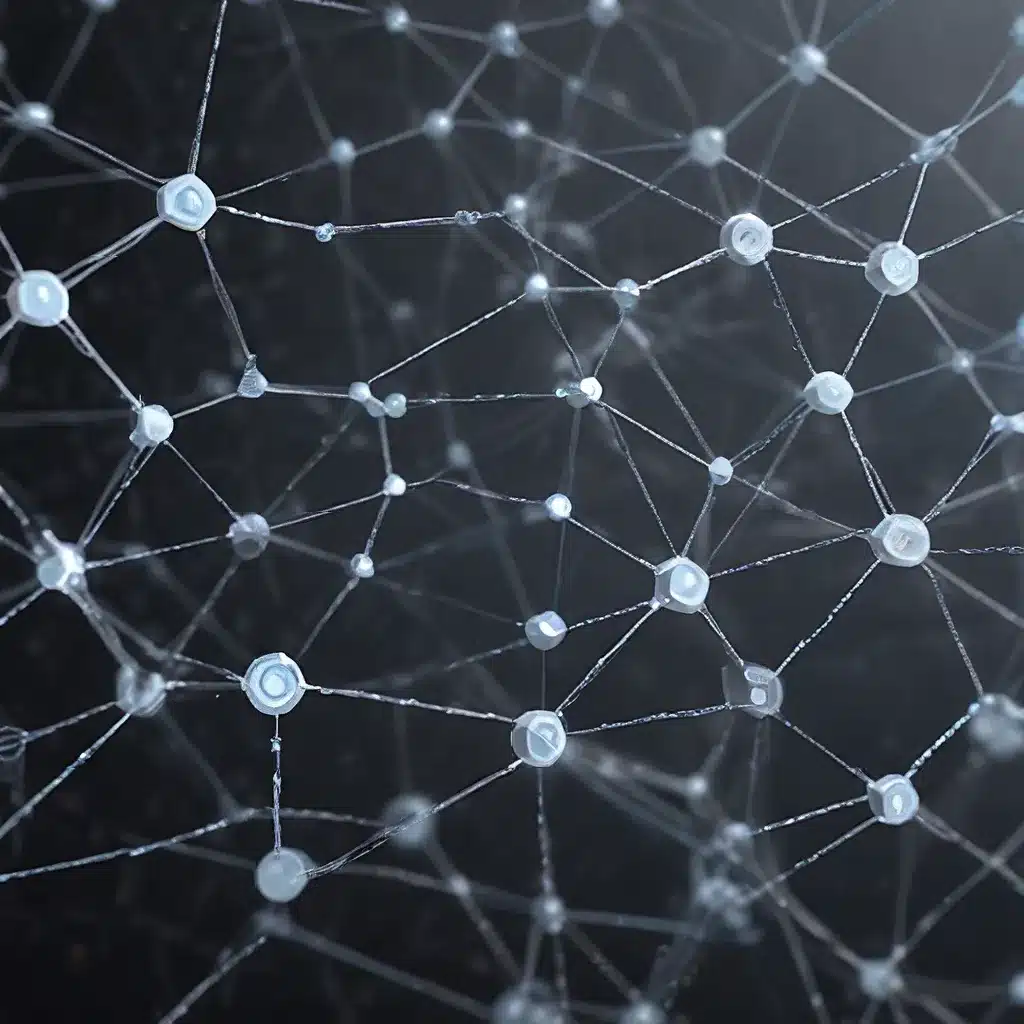
In the rapidly evolving landscape of sensor networks and the Internet of Things (IoT), data management has emerged as a critical challenge. As sensor-enabled devices proliferate, the sheer volume and complexity of the data they generate have placed immense demands on traditional data storage and processing infrastructure. However, a revolutionary technology has the potential to address these challenges: blockchain.
Enhancing Security and Integrity in Sensor Data Management
At the heart of the sensor network ecosystem lies the imperative to ensure the security and integrity of the data collected. Blockchain, with its inherent characteristics of decentralization, cryptographic security, and transparency, offers a compelling solution to this problem.
By leveraging blockchain technology, sensor networks can establish a tamper-resistant and auditable record of sensor data. Each data point recorded on the blockchain becomes an immutable transaction, protected by advanced cryptographic mechanisms. This ensures that the data cannot be altered or manipulated, providing a reliable and trustworthy foundation for data-driven decision-making.
Government agencies and researchers have recognized the potential of blockchain in securing sensor networks, particularly in critical infrastructure and public safety applications. By integrating blockchain into sensor data management, organizations can enhance the reliability and transparency of the information they collect, ultimately strengthening their ability to make informed decisions and respond effectively to emerging situations.
Enabling Decentralized and Autonomous Sensor Data Management
One of the primary advantages of blockchain-based sensor data management is its decentralized and autonomous nature. In a traditional centralized system, sensor data is often aggregated and stored in a central repository, making it vulnerable to single points of failure and potential data breaches.
In contrast, a blockchain-based approach distributes the data across a network of nodes, each maintaining a copy of the ledger. This decentralized architecture not only enhances the resilience of the system but also enables autonomous data management by leveraging smart contracts.
Smart contracts are self-executing agreements encoded on the blockchain, which can automatically handle the storage, access, and processing of sensor data without the need for manual intervention. This streamlines the data management process, reduces the risk of human error, and ensures that the data is handled in a consistent and transparent manner.
Furthermore, the decentralized nature of blockchain-based sensor data management empowers data owners to have greater control over their information. Sensor owners can define access policies and grant or revoke permissions to various parties, ensuring that the data is only accessed and used in accordance with their preferences.
Optimizing Energy Efficiency in Sensor Networks
Energy consumption is a critical consideration in the design and deployment of sensor networks, particularly in remote or resource-constrained environments. Blockchain, with its potential to enable decentralized decision-making and autonomous data management, can also contribute to improving energy efficiency in sensor networks.
Researchers have explored the use of blockchain-based energy-efficient mechanisms, such as Proof-of-Stake (PoS) consensus algorithms, to reduce the energy-intensive computations required in traditional Proof-of-Work (PoW) blockchain networks.
By adopting energy-efficient blockchain protocols, sensor networks can minimize the power consumption of the nodes responsible for validating and maintaining the distributed ledger. This, in turn, extends the battery life of sensor devices, allowing them to operate for longer periods without the need for frequent recharging or replacement.
Additionally, the autonomous decision-making enabled by blockchain-based smart contracts can optimize the scheduling and coordination of sensor data collection and transmission, further enhancing energy efficiency and reducing the overall power requirements of the sensor network.
Addressing Challenges and Considerations
While the integration of blockchain into sensor data management presents significant opportunities, it also introduces a range of challenges and considerations that must be addressed.
Scalability: Blockchain networks, particularly those based on PoW consensus, can face scalability issues as the number of transactions and data points increases. Addressing this challenge requires the adoption of scalable blockchain architectures and optimized consensus mechanisms.
Interoperability: Sensor networks often comprise heterogeneous devices and systems, each with its own data formats and communication protocols. Ensuring seamless interoperability between these various components and the blockchain network is crucial for the effective integration and management of sensor data.
Privacy and Data Sovereignty: While blockchain enhances the security and transparency of sensor data, there are concerns around data privacy and the sovereignty of sensor owners. Developing robust privacy-preserving mechanisms and data governance frameworks is essential to address these considerations.
Regulatory Compliance: As sensor networks and IoT applications become more prevalent, they must adhere to various regulatory requirements, such as data protection laws and industry-specific standards. Integrating blockchain-based solutions must consider compliance and regulatory alignment.
The Future of Sensor Data Management with Blockchain
As the IoT revolution continues to unfold, the role of blockchain in sensor data management holds immense promise. By enhancing security, enabling decentralized and autonomous operations, and optimizing energy efficiency, blockchain can revolutionize the way sensor networks collect, store, and utilize their data.
Sensor-networks.org is at the forefront of this technological transformation, providing a comprehensive platform for sensor network enthusiasts, researchers, and industry professionals to explore the latest advancements and best practices in this dynamic field.
As we move forward, the integration of blockchain with sensor networks will continue to drive innovative applications, improved decision-making, and enhanced sustainability across a wide range of industries, from smart cities and industrial automation to environmental monitoring and public safety.
By harnessing the power of blockchain, the sensor network ecosystem can unlock new levels of security, transparency, and efficiency, paving the way for a future where sensor data is leveraged with unparalleled trust and reliability.